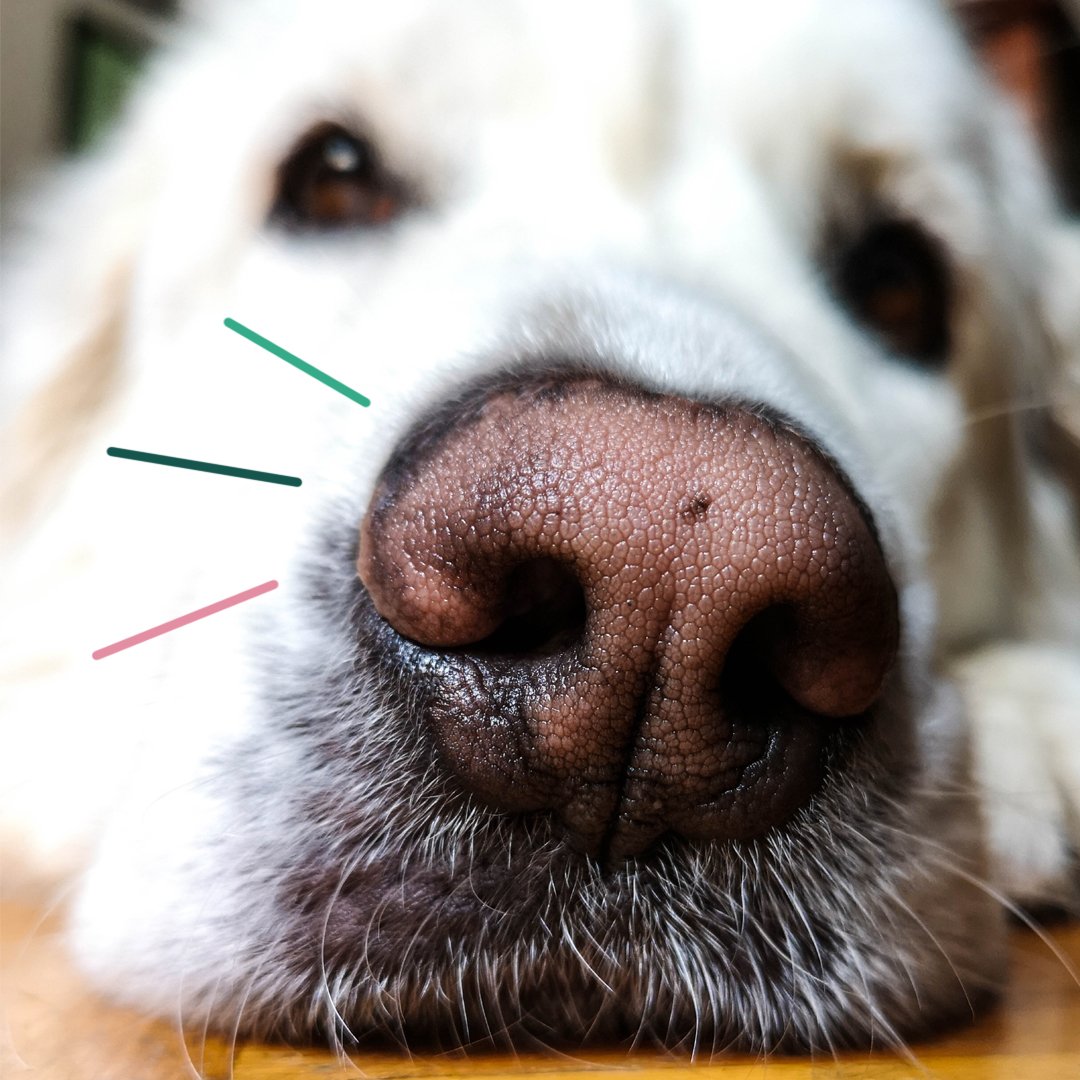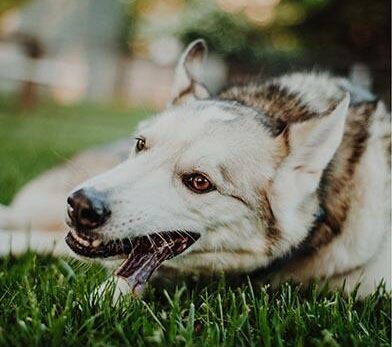
It’s no surprise that dogs have a much stronger sense of olfaction than we do. Some think it’s up to 100,000 times more powerful than ours. Our furry friends can smell all kinds of things that we are oblivious to—like your dirty sock hiding under the bed or the treat bag from a mile away. So how do they do it?
Unique anatomy
Did you know that each nostril is independently functioning and can sample air from different areas at the same time? This helps pinpoint exactly where odors originate from in their environment. Sniffing (aka a series of rapid inhalations and expirations), maximizes the detection of odors by allowing air to move in and out of the nose at the same time, so dogs are constantly taking in new scents as they are expelling old ones.
The internal architecture of the canine nose and nasal cavity allows air to take different routes during breathing (inhalation) versus during sniffing. Once through the nostrils, air enters the bony nasal cavity which contains turbinate bones and paranasal sinuses. When breathing normally, the inhaled air is split up in the nasal passages — part of it goes to the olfactory region in the back of the nasal cavity and the rest travels through the trachea to provide oxygen to the lungs. But when sniffing, more of the air goes directly to the olfactory region where smells are processed and the details are then sent to the brain for interpretation. The exhaled air exits the nose through the slits in the side.
Hardwired scents sense
In contrast to a human’s 5-6 million olfactory receptors, dogs have closer to a whopping 300 million olfactory receptors in their nasal cavities. The number and type of receptors present can vary depending on the breed, genetics and even training. Each olfactory receptor has hundreds of cilia (microscopic hairlike structures) that respond to odors, but humans only have about 25 cilia per receptor. These receptors send messages directly to the olfactory bulb of the brain.
And for dogs, add to the list yet another option for odor investigation—the vomeronasal organ. It is a specialized sense organ located at the base of the nasal cavity just above the roof of the mouth. Its function is to detect pheromones (specific chemicals produced by animals), playing a role in behavior and reproduction.





